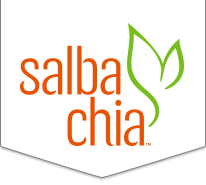A Marvel of Nutrition in a Teeny Tiny Package
Each and every Salba Chia seed is incredibly nutrient dense. Gram for gram, they’re respectively higher in omega-3s (ALA), calcium, magnesium, fiber and iron than fish (EPA/DHA), milk, broccoli, oats and spinach. They hold 2.8 times more antioxidants than pomegranates and the list goes on.
Even when stacked up head-to-head with other chia, flax or quinoa, Salba Chia seed benefits come out ahead in more ways than one. Use the interactive chart below to learn more about these comparisons.
Salba Chia Nutrient Comparisons
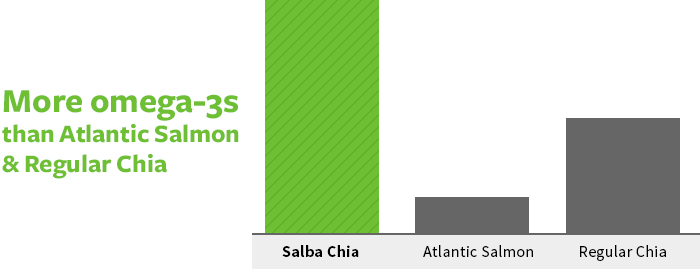
Omega-3 (ALA) fatty acids are considered essential fatty acids and are necessary for human health; however, the body can’t make them. We have to get them through food. They can be found in fish, some plants, nut oils and are quite plentiful in Salba Chia.
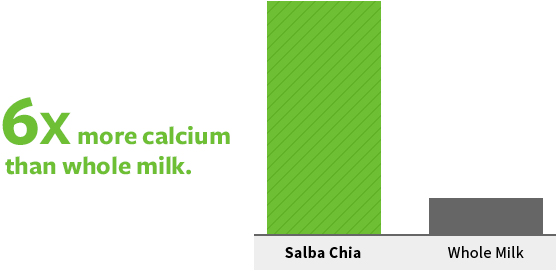
Calcium is the most abundant mineral in your body. It is essential for the development and maintenance of strong bones and teeth, and that’s where about 99% of the body’s calcium is found. Calcium also helps the heart, nerves, muscles and other body systems work properly. It is probably best known for helping prevent osteoporosis.
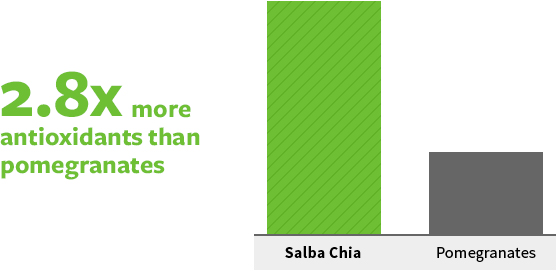
Antioxidants are substances that may protect your cells against the effects of free radicals—molecules produced when your body breaks down food or is exposed to tobacco smoke and radiation. Free radicals may play a role in heart disease, cancer and other diseases.
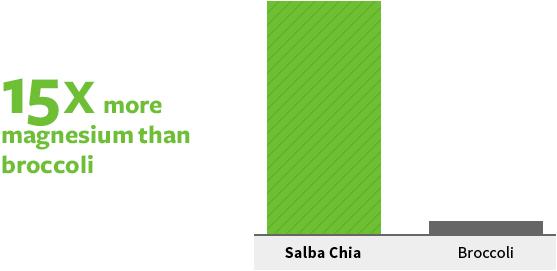
Magnesium is a mineral that’s crucial to the body’s function. It helps keep blood pressure normal, bones strong and the heart rhythm steady. Adults who consume less than the recommended amount of magnesium are more likely to have elevated inflammation markers. Inflammation, in turn, has been associated with major health conditions, such as heart disease, diabetes and certain cancers.
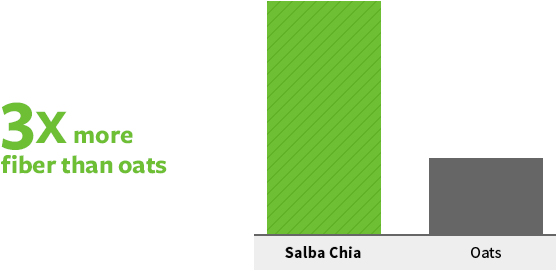
Fiber is the term used to describe the combination of both insoluble and soluble fibers. Soluble fiber is the form of fiber that dissolves in water. Examples of foods that contain soluble fiber include fruits, oats, legumes, barley and Salba Chia. Insoluble fiber comes from plant cell walls and does not dissolve in water. Examples of foods that contain insoluble fiber include wheat, vegetables and seeds.
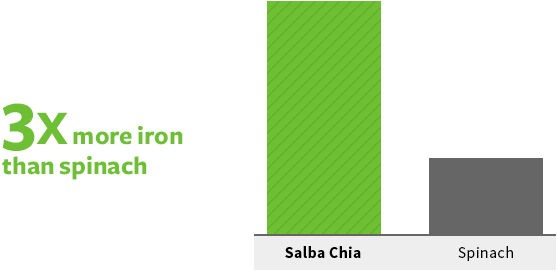
Iron is an essential mineral. The major reason we need it is that it helps transport oxygen throughout the body. Iron is also an important component of hemoglobin, the substance in red blood cells that carries oxygen from your lungs to transport it throughout your body. If you don’t have enough iron, your body can’t make enough healthy oxygen-carrying red blood cells.
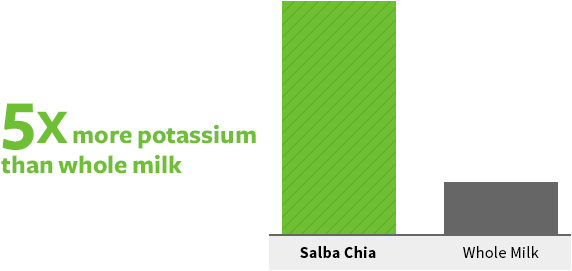
Potassium is a very important mineral for the proper function of all cells, tissues and organs in the human body. It is also an electrolyte, a substance that conducts electricity in the body. Potassium is crucial to heart function and plays a key role in skeletal and smooth muscle contraction, making it important for normal digestive and muscular function.
Salba Chia Food Comparisons
You’ve chosen the right chia.
Why? Salba Chia is consistently higher in protein and omega-3s than any other chia seeds. It is more appealing in food preparation as Salba Chia is whitish in color, while most other common chia seeds are much darker. Since Salba Chia is a standardized nutritional crop, it is also the only chia supported by extensive health and medicinal studies. Each and every Salba Chia seed is grown under ideal controlled conditions by our partners in Argentina, Bolivia and the desert coast of Peru.
Salba Chia brings more to the table than flax.
Why? Our chia contains more omega-3s than flax. But that’s not all. Salba Chia has a mild, pleasant taste, while flax has a stronger dominant flavor—that means there are more chia seed recipes out there than recipes for flax. In addition, Salba Chia whole seeds can be absorbed by the digestive system while flax must be ground prior to use. Salba is 100% nontoxic, while flax contains linamarin, a cyanogenic glycoside. What’s more? Salba absorbs 12 times its weight in water. Flax? Only six times.
Wha–? More mineral content than quinoa?
Yep. Salba offers more mineral content than quinoa and serves as a good source of calcium and magnesium. Each ounce of Salba Chia contains over 200 milligrams of calcium. A serving of quinoa contains just 16 milligrams of calcium and 0.6 milligrams of magnesium. Salba contains more niacin than quinoa and 10% of the daily recommended intake of folate. Salba Chia seeds’ nutrition is that robust.
More omega-3s than hemp seeds
Hemp seeds offer more omega-6 than omega-3. Yet, our diets tend to be much higher in omega-6 than omega-3 and that’s what makes foods like salmon (or chia!) more valuable. While hemp may have more protein, it has little to no fiber. Soak a tablespoon of hemp in liquid and you just end up with wet hemp. Not too appetizing now, is it?
